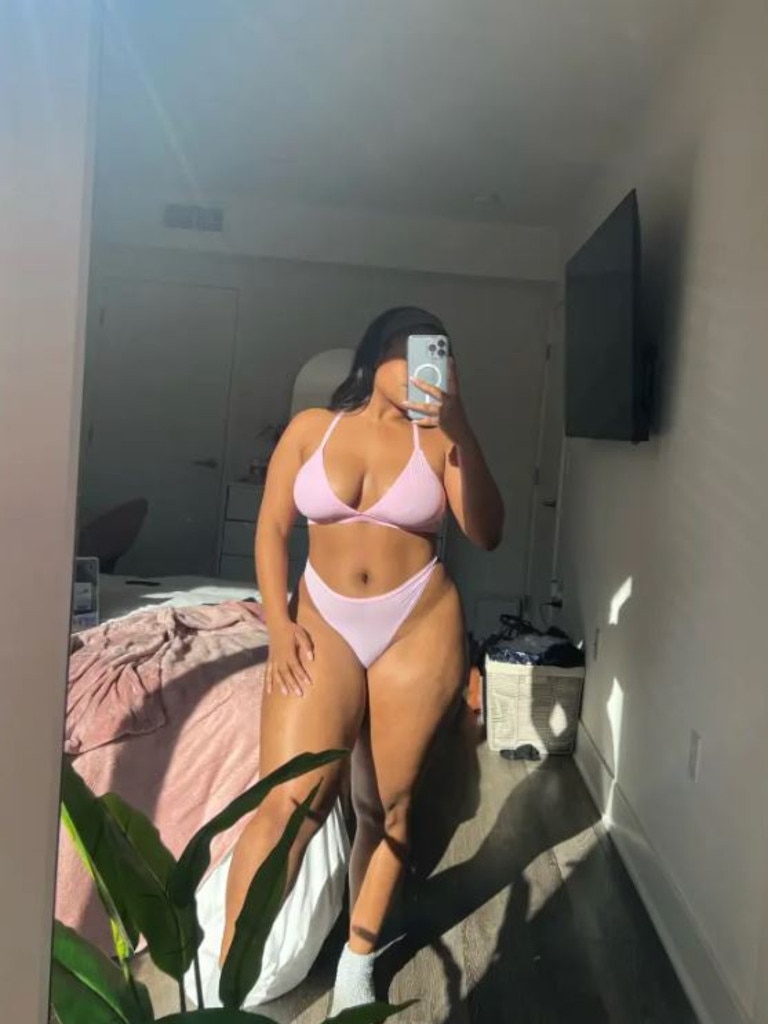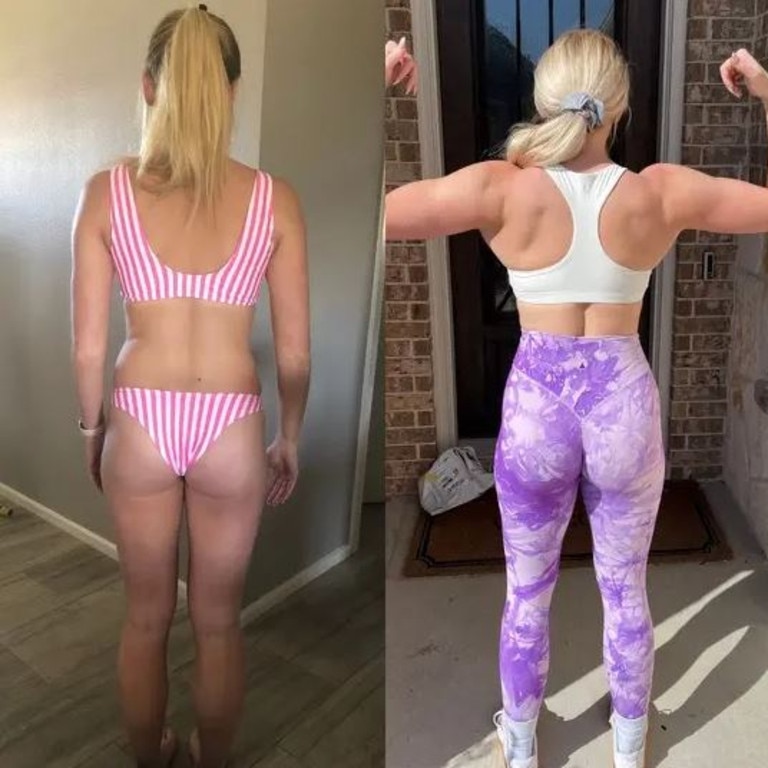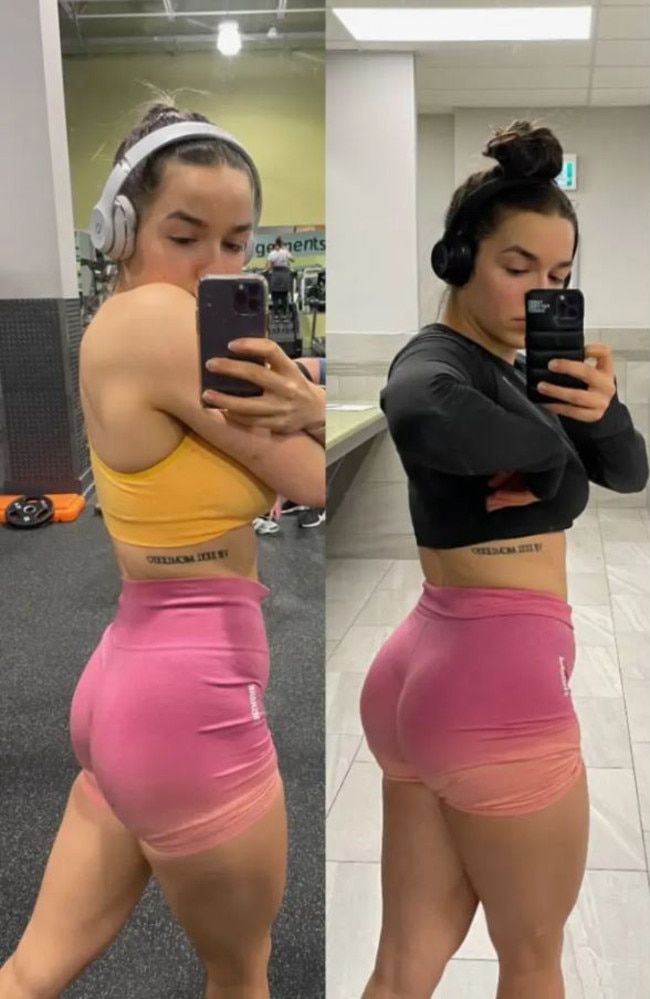Reverse dieting: US woman loses weight after doubling calories
Dozens of Gen Z women have shared the surprising way they’ve lost weight – but experts have warned it comes with a price.
This past January, Tyla Gomez, 24, was feeling overweight and miserable.
She was on an extremely restrictive diet, limiting herself to just 1250 calories a day, but she wasn’t losing weight.
It seemed she’d never be able to squeeze into the size 10 skinny jeans she’d recently purchased.
She considered getting liposuction or reducing her caloric intake even further.
Instead, she decided to try something that she’d seen on social media: eating more.
“It’s called reverse dieting,” Gomez, a lifestyle content creator and aspiring actor from Los Angeles, told the New York Post.
“You can lose fat by increasing your calorie intake in order to restore your metabolism after being in a caloric deficit. I’m eating around 1750 calories now, working out more and I’m able to fit into those jeans.”


Reverse dieting entails cycling between three key phases: calorie deficit, calorie increase (or reverse dieting) and maintenance. It first became popular among bodybuilders in the early 2000s, and now it’s having a social media moment.
On TikTok, the hashtag #reversedieting has amassed over 46 million views.
Fans of the approach hail it as a way to speed up the body’s metabolism and burn fat by eating more food without gaining weight, but experts warn that there’s little scientific proof behind reverse dieting and that it could ultimately hurt your metabolism.
“Younger people might experience weight loss because their metabolism is still very impressionable,” Manhattan-based nutritionist Amanda Edell told The Post.
“But following a diet that puts you in a calorie deficit is stressful on the body because your cortisol levels are up, your hormones out of whack, your sleep is a mess and your digestion is horrible.
“Then, once you start to nourish the body with more calories, the cortisol levels go down, you’re sleeping more, your hormones are balanced and weight loss can happen – but it may not work for everyone.”

Registered dietitian Abby Langer, from Toronto, agreed.
“Reverse dieting is just a theory,” she told The Post. “When you increase your calories after a restrictive diet, you may not see weight gain immediately. But eventually, you will.”
A 2019 study by George Mason University found that “while anecdotal reports of successful reverse dieting are available, research is needed to evaluate [reverse dieting’s] true efficacy”.
The lack of empirical data notwithstanding, TikTokers wanting to drop a few, as well as those hoping to maintain their ideal weight without being eternally confined to a low-cal regimen, are singing the praises of the counterintuitive approach.
“It helped me reshape my body, stabilise my hormones and develop a healthy relationship with food,” reverse fitness coach Jacey Lamb, 25, from Dallas, Texas, told The Post.
She recently lost 10 pounds (4.5kg) during a diet cycle, in which she began at a calorie deficit of 1700 and ended at 2400 calories a day.
“I’m able to optimise my metabolism, eat more, lose fat and gain muscle in the gym,” she said.
A reverse dieting cycle starts in a calorie deficit – meaning a person is eating less than the suggested caloric intake for their age group.
Women from 20 to 30 years old are advised to consume between 1800 and 2400 calories a day, per the Cleveland Clinic.

After being in a deficit for between 8 and 12 weeks, the dieter begins to gradually increase their intake by adding 50 to 100 calories to their daily intake each week over the course of one to two months.
During this time, folks incorporate yummy treats like chocolate bars, popcorn, cookies and sugary cereal into their otherwise high-protein, nutritious meals.
The caloric increase continues until the dieter reaches the “maintenance” phase, during which they are eating between 2000 and 2700 calories daily without seeing an increase in their weight.
“During maintenance, you don’t have to worry about burning off calories or increasing the intensity of your workouts,” Lamb said, adding that a dieter should remain in the phase for at least three months before beginning a new cycle.
“Maintenance means you’re maintaining your weight with your current activity levels.”

And strength training, including exercises such as squats, dead lifts, shoulder presses and push-ups, is key.
Reverse dieters like Gomez and Lamb do 45-60 minute weightlifting workouts three to four times a week in order to burn off the fact from the excess calories and replace it with muscle mass.
Danica Doble, 21, who has used the method to maintain a 40-pound (18kg) weight loss since January 2020, credits reverse dieting with saving her life.
“I thought I’d have to eat in a calorie deficit for the rest of my life in order to lose weight and keep it off,” Doble, a TikTok fitness influencer from Toronto, told The Post.

In order to keep her weight at a sustainable 140 pounds (63kg) – down from 180 pounds (81kg) – she typically goes on reverse diet cycles from 1800 to 2300 calories.
“This allows me to put more food in my system, and eat things that I love like waffles, chocolate and spaghetti bolognese,” she said, “which gives me energy to workout and tone up without gaining my weight back.”
And Gomez, although still a reverse dieting novice, said adopting the eating habit has been an empowering change.
“It’s liberating to know that you can eat and lose weight,” she said, noting the inches she’s dropped from her waist, thighs and arms since the start of the year.
“It feels so good to know that food is not the enemy.”
This article originally appeared on the New York Post and was republished with permission





